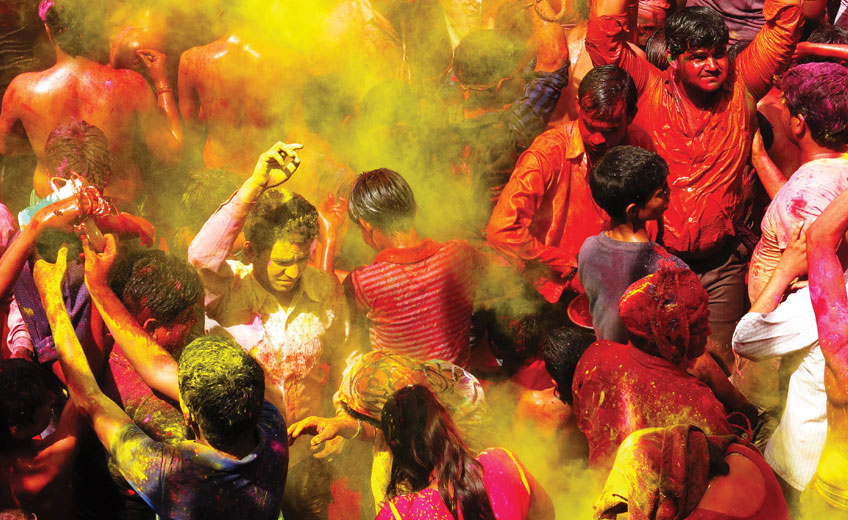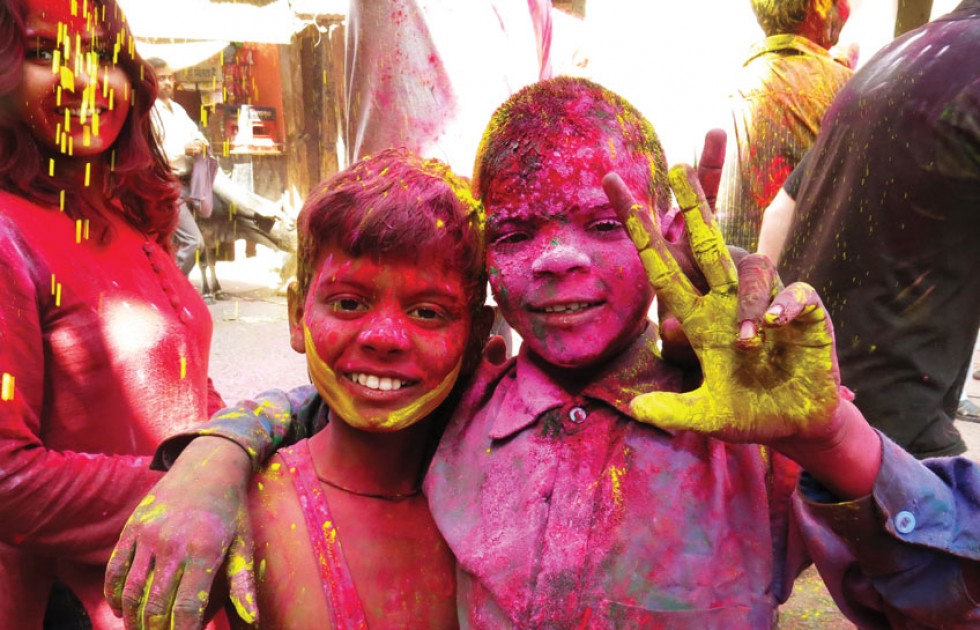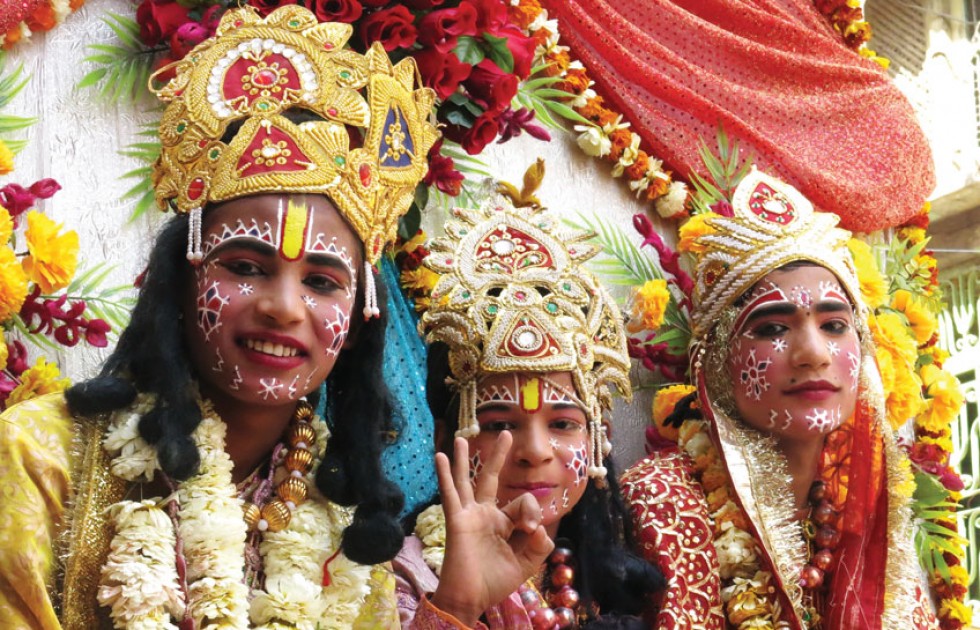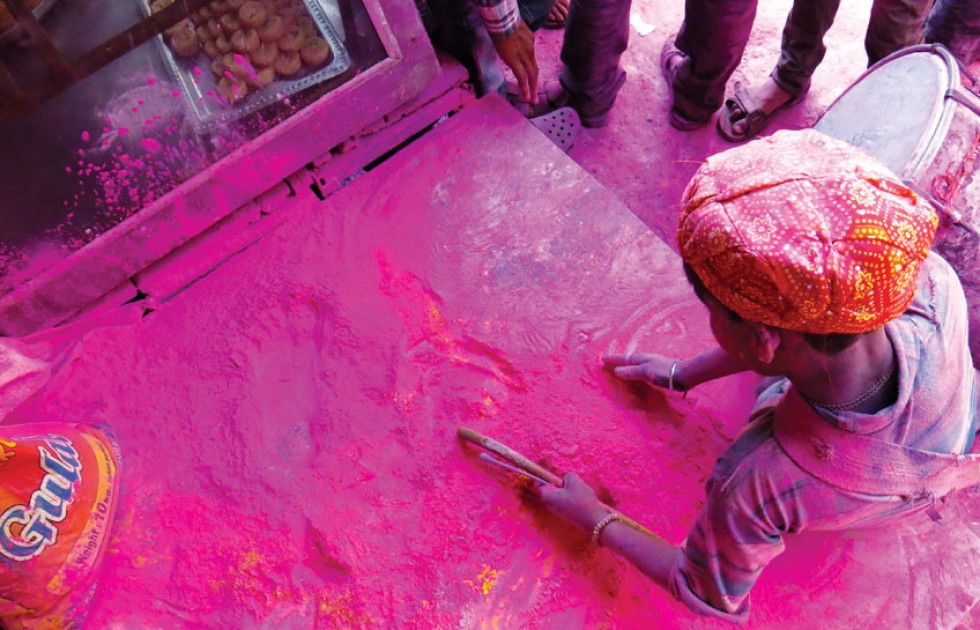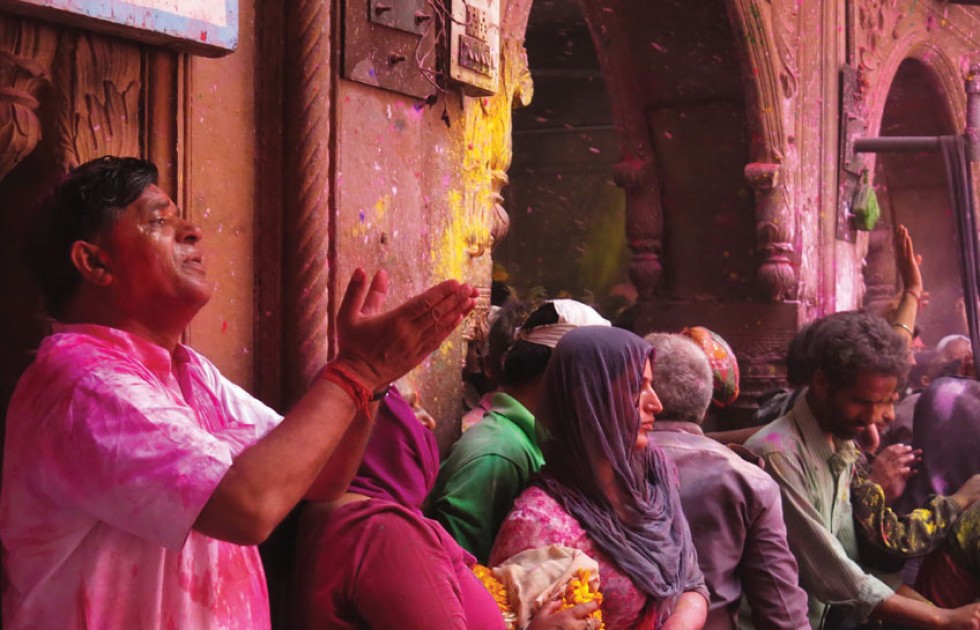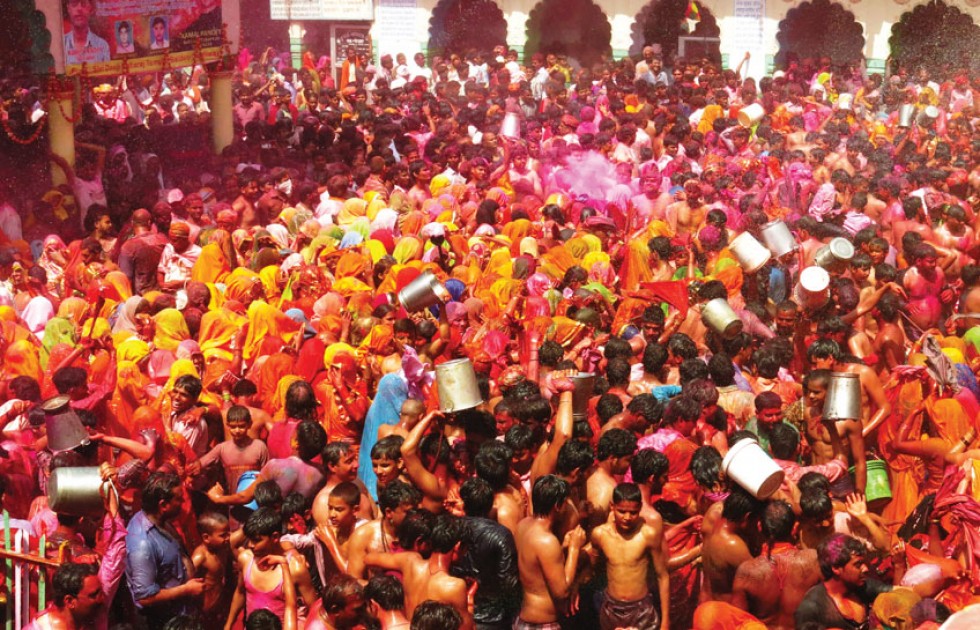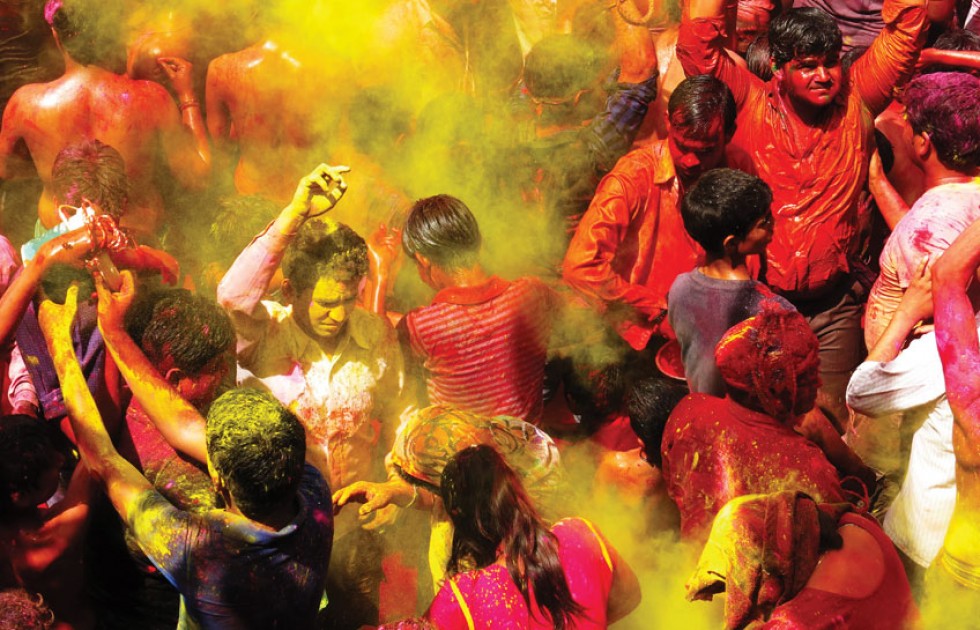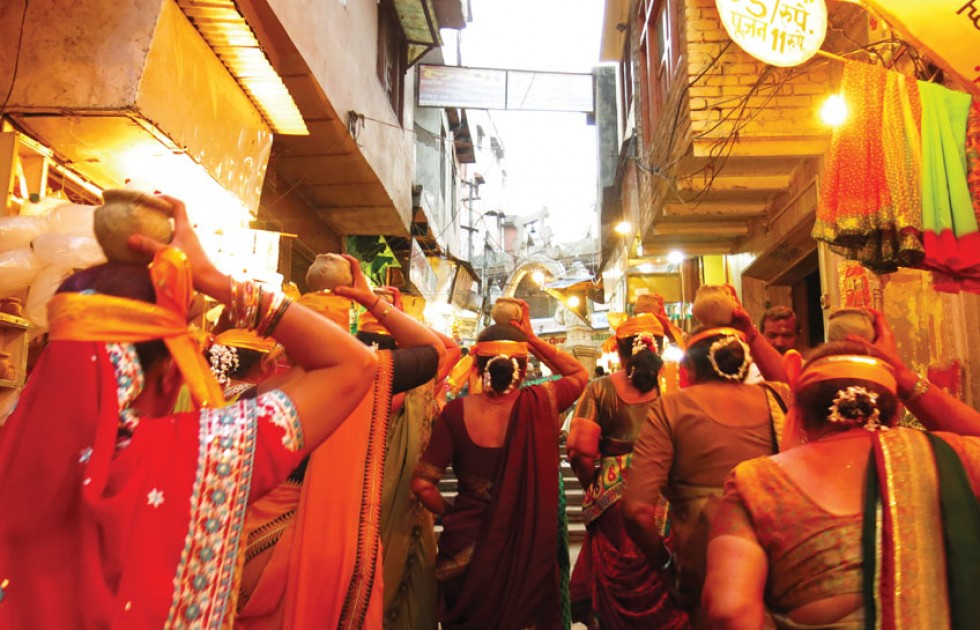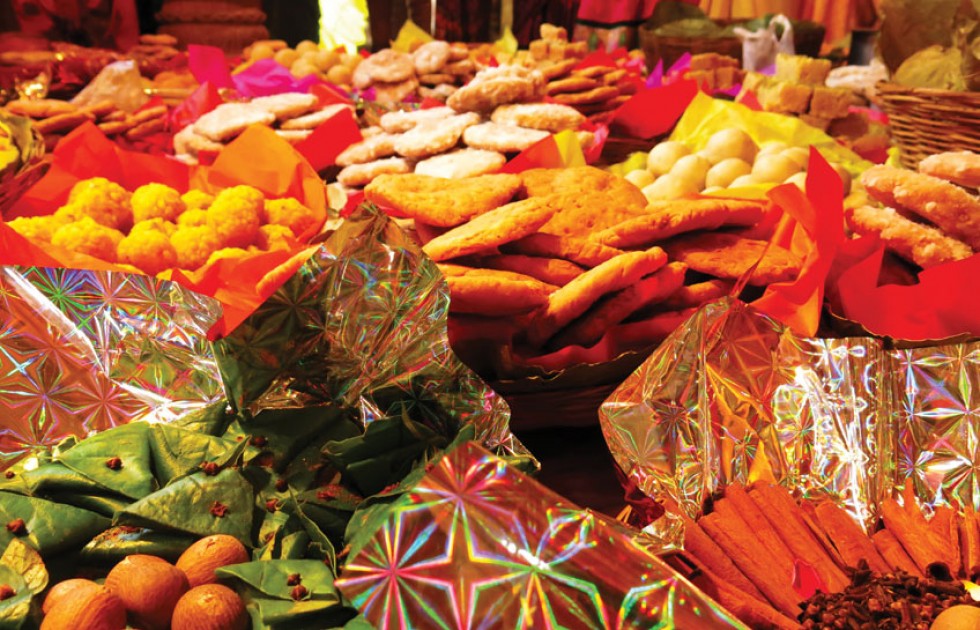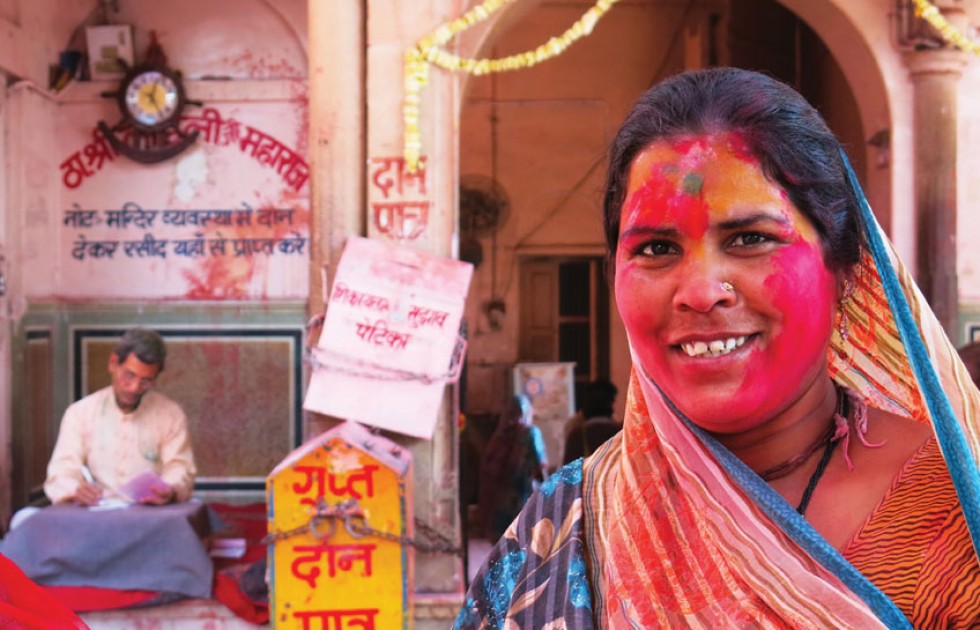At the beginning of spring its hues, chirping sounds, buds and blossoms return to earth, marking the time for Holi. The most colourful celebration belongs to the Hindu world and is best observed in India, home to the majority of the religion’s devotees. Falling on the last full moon of the lunar month of Phalgun, which usually falls in March or late February, the festivities permeate the air above the nation’s streets with coloured powder and water, music, hymns, laughter and a sense of joy. And within India, nowhere is Holi celebrated as in the Braj region, around 200km south of Delhi, where festival fever reaches the brightest colours.
The Holi celebration has many purposes, most prominently to welcome spring. For farmers, it is believed to help grant fertile lands and good harvests. With the Hindu new year falling a few days later, the time is considered a new beginning, an opportunity to forget past misfortunes and reconcile with one another. Dedicated to the Hindu deity Krishna and his divine love Radha, Holi is celebrated for one or two days in most of the country. But in the Braj region of Uttar Pradesh, centred in the town of Mathura, where the gods grew up, the celebration lasts up to 16 days.
What Happens at Holi?
The celebrations range from traditional ceremonies at religious sites and shrines to crazy street parties with pumping loud techno and Indian pop music. The atmosphere building up to the festival starts days earlier, with people singing prayers and hymns, and dancing for the gods at religious sites and in public spaces like buses. Street stalls will pull out coloured powder, colourful clothing and sweet treats for the occasion.
Holi officially kicks off the evening before the day, also known as the night of Holika Dahan, when people gather at intersections and public places with pyres of Holika statues, sing and dance around the pyres, and eventually burn the statues to ash by midnight. The act signifies the triumph of good over evil represented by the burning of Holika, and is how the festival gets its name. Holika was a sister of the equally demonic King Hiranyakashyap, who ordered everyone in his kingdom to worship nobody but him. However his son Prahlad turned into a devotee of Vishnu. The displeased king, failing to kill Prahlad himself, finally asked his sister who had a fireproof boon to take Prahlad into a blazing pyre. While Prahlad was saved by Vishnu, Holika burned to ash, as the protective boon only worked if she entered fires alone.
The play with colour takes place on the day of Holi. Hindu mythology has it that when the gods were young, Krishna envied Radha, who had a much fairer complexion. To make himself feel better, he teased Radha by putting coloured powder on her face. And so did Radha, to get even. The exchange is said to have launched the colour fights of Holi.
On the day, temple halls are inundated with waves of devotees asking for blessings. While women and elders form groups called tolis and move in colonies, applying colours and exchanging greetings, the streets are filled with people chasing each other with bags of coloured powder (gulal) in bright red, magenta, pink, green and blue, or with colour-filled water pistols in hand, shouting, “Radey radey!” (an accent of Radha’s name), singing and dancing to Holi songs and the latest hits on the radio. No other Hindu festival allows people to let loose and be as silly and crazy as Holi. Women, often not allowed to mingle with men, can do so on this day. By the end of the morning, everyone looks like a walking canvas of colour.
The colour battles are resolved by the evening, when people dress up in nice clean clothes, visit friends and relatives, and exchange sweets and gifts. Treats popular during Holi are gujia (sweet dumplings), mathri (flaky biscuits) and papri (crisp fried dough wafers). Business and normal routines resume the next day.


